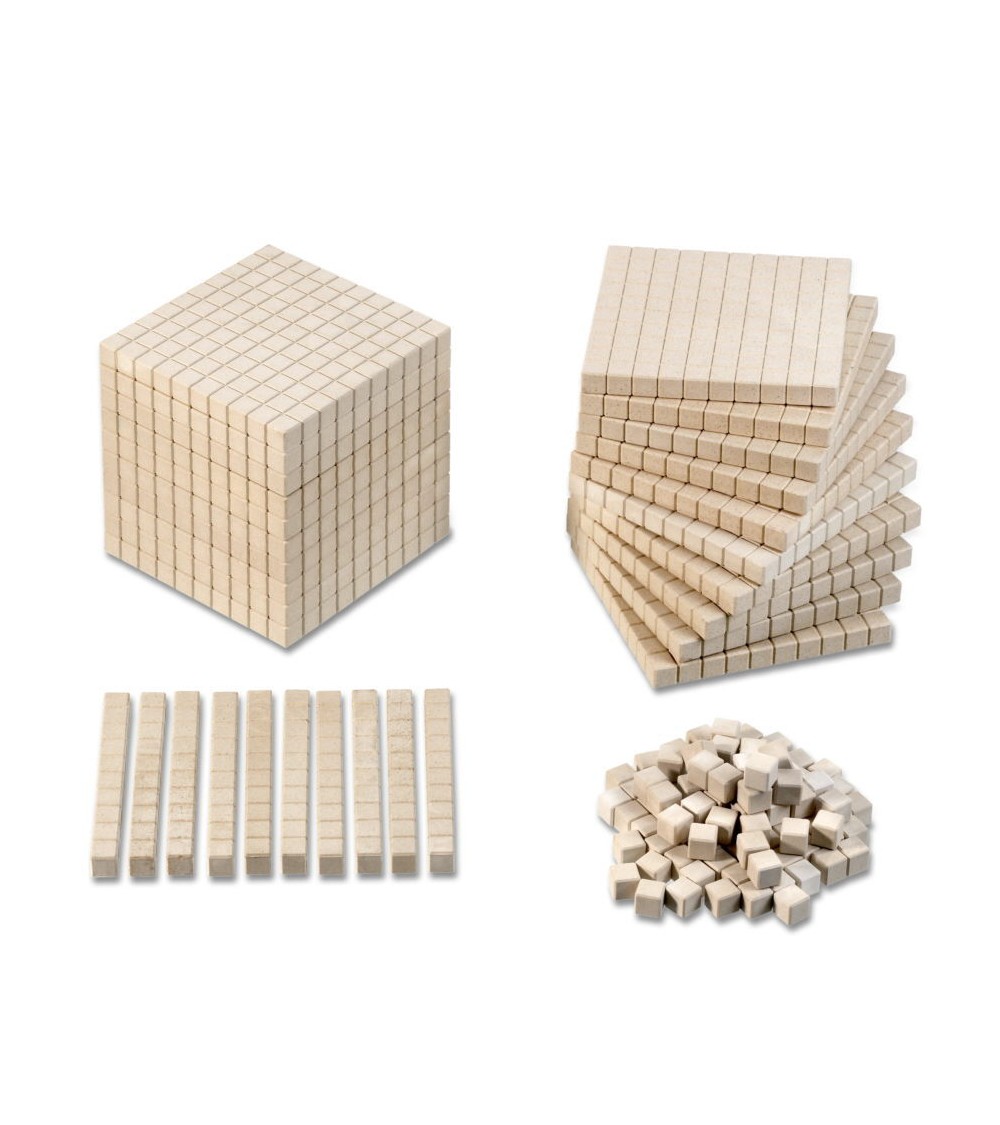Decimal material
Mathematical cube, Dienes material for understanding numbers
121-piece set, made from recycled material
The Montessori material Mathematical Cube made of Re-Wood® is perfect for consolidating the number range up to 1000. The proportions of units, tens, hundreds and thousands are clearly shown: A small units cube fits exactly 10 times on the tens bar, this in turn 10 times on the hundreds plate and 10 stacked hundred plates correspond exactly to the large thousand cube. In this way, elementary school students learn the power of the individual positions in the decimal system.
Children with poor numeracy particularly benefit from the clarity of the material, since it is not possible, for example, to mix up units and tens. And the pleasant feel of the 121 cubes ensures that you will be happy to pick them up to practice the basic arithmetic operations.
Application, advantages, areas of application for this Montessori material:
-
- Representation of any number with the dice
-
- Practice multiplication and division up to 1000
-
- Understand addition and subtraction up to 1000, especially with the tens transition
-
- Learning material for children from 4 years
-
- Practice estimating quantities
-
- Capture the power of numbers
Extent of the Montessori arithmetic material:
1 thousand cube (numerical value: 1000) 10 x 10 x 10 cm
10 hundreds areas (numerical value: 100) 10 x 10 x 1 cm
10 tens bars (numerical value: 10) 10 x 1 x 1 cm
100 units dice (numerical value: 1) 1 x 1 x1 cm
Material:
Re-Wood® guarantees an excellent ecological balance with a high level of operational safety and maximum strength. It consists of more than 80% pressed, groundwood waste (from certified sustainable forest management according to the PEFC system), a polymer additive, and is 100% recyclable.
Instructions for the math cube
The adult places a units dice, a ten stick, a hundreds plate and the thousands cube on the table. Now he takes the one's die and says this is one.
To the left of the one he puts the ten stick and says That's ten. Now he compares very emphatically the units cube with the tens rod in order to clarify the difference in size. Also to the left of the tens bar is the hundreds plate. These are hundreds and the tens bar is compared with the hundreds plate. This also happens with the thousand cube (that is a thousand).
Please give me one, please give me 10, please put the hundred on the table there, where are a thousand
If the child still has difficulties with this assignment, calmly start the exercise from the beginning and possibly first take the units cube and the thousands cube (two very different sizes).
If the child shows confidence in this exercise, the third of the three-step lesson comes:
The adult, for example, points to the tens rod: What is it? Now he points to the thousand cube: What is it? ...
Now the thousand cube, the hundred plate and the ten bar are dismantled. To do this, the adult puts the tens stick in front of him and places the same number of cubes next to it, counting loudly:
one, two, three ......... ten - a tens consists of 10 ones

